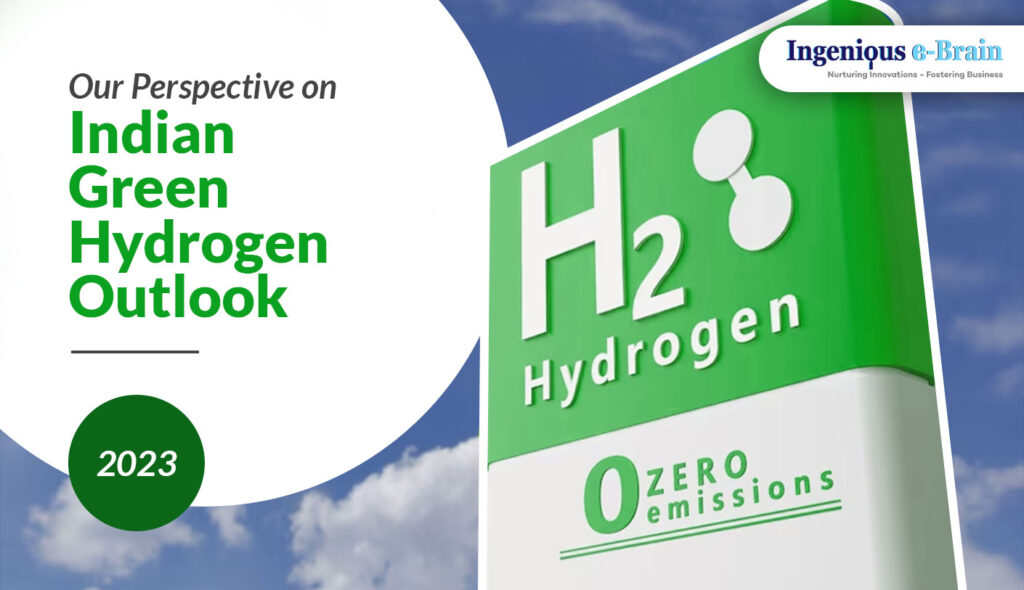Overview:
Creating a sustainable environment is a universal goal that all countries have been making strenuous efforts. Like many other nations, India has recognized the need to transition to a green and sustainable future. The adoption of Green Hydrogen (GH2) is a critical component of this transformation. In order to ensure the country’s energy security, the Government of India has staked $2.3 billion on the green hydrogen economy and entered the global race to develop green energy. Prior to delving into India’s efforts towards adopting GH2, let us first understand how crucial it is. India is the third-largest emitter of greenhouse gases in the world. Thus, to address climate change, the nation must significantly mitigate emissions by adopting clean fuels.
Action Plan for Pacing Up GH2 Economy:
India has ample sources of renewable energy, comprising hydro, wind, and solar, which can be utilized to manufacture green hydrogen for domestic and export purposes. The Union Cabinet approved the National Green Hydrogen Mission on January 4, 2022, with the goal of making India a leading global producer and supplier of GH2. The country hopes to become an export hub for Southeast Asia, the Middle East, Europe, and Africa by 2030. The country is concentrating its efforts on developing indigenous manufacturing capabilities, attracting business and investment opportunities for the emerging GH2 industry, funding several R&D projects, and creating opportunities for employment and economic development. India’s Ministry of Power permits GH2/Ammonia (NH3) manufacturers to buy renewable energy from the power exchange or set up renewable energy capacity anywhere.
India is proposing a $2 billion incentive program for the green hydrogen industry to reduce production costs by a fifth over the next five years. The nation is obliging oil refineries to substitute 30% of fuel consumption with GH2 by 2035, beginning from 3% in 2025. As per the updated policy, fertilizer production should include 70% GH2 by 2035, starting from 15% in 2025. Also, urban gas distribution networks should replace 15% of their fuel volume with GH2 by 2035, commencing from 5% in 2025. Moreover, in the year 2021 to 2022, the country installed a record 15 GW of new renewable energy capacity, bringing hope to accomplish the government’s ambitious target of 450 GW by 2030.
Understanding the Potential of India’s GH2 Market:
Based on IEBS analysis, the demand for GH2 in India is projected to grow exponentially in the forthcoming years, reaching 0.9 MMT by 2026, 5 MMT by 2030, and 22.1 MMT by 2040. Such a remarkable rise in demand is attributed to the regulatory initiatives taken by the Indian government, burgeoning R&D projects, and several collaborations among domestic & foreign firms. The refinery, green ammonia, export, green fertilizers, mobility, and city gas distribution are the key sectors propelling the nation’s green hydrogen market. Among all, the agriculture sector, specifically the green fertilizer industry, is expected to capture a significant share (around 30%) of the green hydrogen market by 2026. However, the export and mobility industries will likely flourish aggressively toward sustainability and dominate the green hydrogen market, covering marginally lower than 80% of the total GH2 demand by 2040. Other than utilizing green hydrogen as a clean fuel or exporting it overseas, it can be converted into green NH3 and used for fertilizer production. This can considerably decline our country’s dependency on expensive liquified gas imports and generate opportunities for ammonia producers & suppliers across the value chain.
Initiatives by some key players to thrive the nation’s hydrogen economy:
Considering the unprecedented growth potential and vast applications of India’s hydrogen industry around mobility, chemical, agriculture, and decarbonization sectors, several established as well as emerging companies have been tapping into the less explored market.
- Larsen & Turbo and HydrogenPro to sign an agreement for manufacturing alkaline water electrolyzers in India at a gigawatt scale.
- Joint Venture between Indian Oil Corporation Ltd., L&T, and ReNew to accelerate green hydrogen economy.
- John Cockerill and Greenko Group will work together to develop India’s largest Green NH3 plant in Himachal Pradesh.
- Greenko Group aiming to export supply 250 kt green NH3 to Germany’s Uniper from 2025.
- Adani Group to increase green NH3 production by up to 7.5 MMTPA of green ammonia by 2030.
- Essar potentially meets green NH3 demand for its UK refinery by producing and exporting it from India.
- Reliance New Energy Solar Limited (RNESL) to collaborate with Denmark’s Stiesdal A/S on technology development and manufacturing of Hydrogen Electrolyzers in India.
- Adani Group and French giant TotalEnergies SE plan to invest $5 billion in manufacturing green H2 and related products in India.
- Adani-Ashok Leyland-Ballard partnership for manufacturing hydrogen-fueled electric trucks.
- FC TecNrgy, SFC Energy, AG Germany, and Navratna Defence PSU Bharat Electronics Limited (BEL) signed an MoU to address India’s sustainable energy needs.
- NTPC Ltd, India’s largest integrated energy company, was awarded with the project of ‘Standalone Fuel-Cell based Micro-grid with hydrogen production.
Analytical Perspective:
Analysts at Ingenious e-Brain (IeB) take a closer look at green hydrogen economy developments in India and anticipate that the approved National Green Hydrogen Mission will spur the growth of GH2 over the long term. An estimated $90 billion in green hydrogen investment by 2030; IeB research shows that India primarily focuses on the demand creation business model while incentivizing supply-side and use of GH2 in refineries, fertilizers, shipping, steel, and heavy-duty transportation.
IeB is one of India’s top five research & advisory firms in the Hydrogen space—as it holds significant expertise in hydrogen technology to deliver crucial insights & recommendations for established and budding companies seeking to invest in GH2/ ammonia-related projects. Our highly competent team of experts has profound knowledge of green hydrogen market dynamics, regulatory insights, feasibility studies, technology selection, implementation, and commercialization, which help us gain a leading edge among our contenders in the consulting industry. In addition, our sound relations with renowned Indian green hydrogen companies help us keep abreast with the market’s current scenario, along with offering our clients an excellent opportunity to collaborate with these companies.
If you want to know how green hydrogen demand will evolve in India over the next 5 to 10 years and how IeB can help you identify new play areas in the Indian region that may synergize with your existing technological know-how, products, and product services, thereby positively impacting your revenues? Inquire with IEBS consultants about their thoughts/opinions.
Article by Ingenious e-Brain:-
Contact us:-
US Office:-
4 Heinrick Way Bridgewater,
New Jersey 08807, USA
Phone:-
+1 347 480 2054
+1 202 697 9162
India Office:-
207-208 Welldone TechPark, Sohna Road
Sector 48, Gurugram, Haryana 122018, India
Phone:-
+91 124 429 4218
Email:-
queries@localhost



